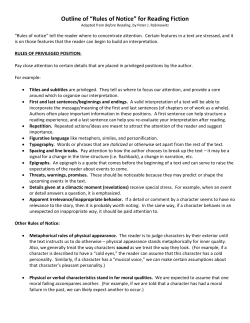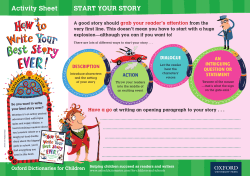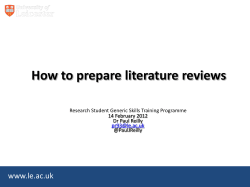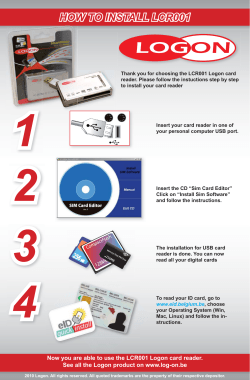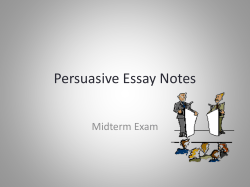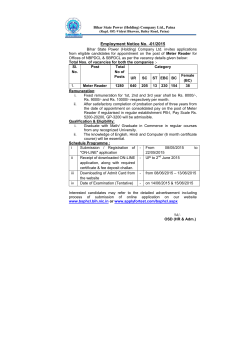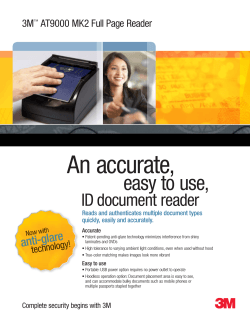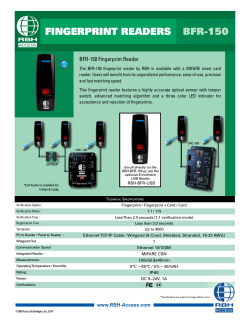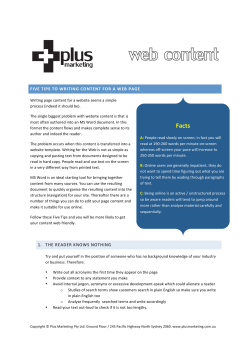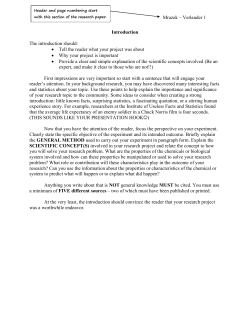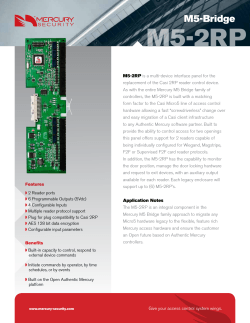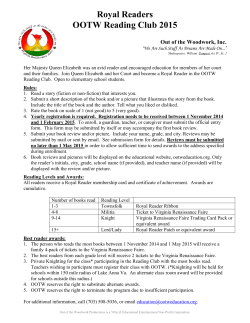
Tips for answering free response questions
Tips for AP Exam Long Response Use the 10 minute reading period to: 1. Read all four questions to decide the order in which you’ll answer them. 2. Make an outline. It is much faster to scratch out a quick outline and then make quick additions to it rather than making changes to large written paragraphs. 3. As you read the question, underline all verbs as reminders of what you need to do. This will help you avoid leaving out parts of the question. When you=re writing your response: 4. As you write your response new ideas may come to you. Stop to jot these down on your outline and then go back to your writing. If you change your mind on something, simply cross it out rather than scribbling it out completely. 5. Be careful to answer all parts of the question but be sure to answer ONLY the question. When you read the question, make sure you don=t just see what you expect to see. Don't waste time adding material which is irrelevant to the question - the reader is unable to give you credit for it. Writing lots of stuff in the hope of getting lucky wastes valuable time. Don=t waste time rewriting the question. If you answer each part of the question separately and have them clearly labeled, there is less chance a point will be missed. Organize your answers as clearly and neatly as possible. You might want to label your answers according to the sub-part, such as (a), (b), (c), etc. This will assist you in organizing your thoughts, as well as helping to ensure that you answer all the parts of the free-response question. 6. If the question asks for two examples, give two and no more. The reader will only consider the first two. It is very rarely helpful to use a shotgun approach. 7. Do not spend too much time on one part of the question. You don’t want to spend too much time on one question and then not have enough time to at least attempt a response to all of them. Remember the internal maxima. 8. Be specific. The reader is not your teacher who knows you and can make assumptions about what you know or don't know or about your writing style. 9. Don't overlook the obvious. Sometimes simple facts are worth points. Sometimes even a definition can earn a point. 10. If you’re unsure which of two options is correct, do not play the game of saying both because if you earn a point and then contradict yourself, you’ll lose the point. 11. Do not confuse or Aswitch@ terms. For example, use >more rapidly= and >less rapidly= rather than >more rapidly= and >slower.= 12. Write legibly. The reader has probably read hundreds of responses when s/he gets to yours. You don't want to frustrate him. Use a ballpoint pen with blue or black ink - no felt tip pens or weird ink colors (Emma). 13. Diagrams and pictures are helpful when they support your response but they won=t cut it on their own. Also outlines and lists are not acceptable. 14. Readers are not looking for specific words or phrases. Don't underline or highlight what you feel are the Akey@ words that are worth points. You might guess wrong and it just makes your response harder to read. 15. Even if you think you know nothing about the question – you do! Always write something. Come back to the question and give it some thought - you may get a point or two. 16. Each question has a designated place in the Apink booklet@ for the response. Put the response on the right page rather than running them together to Asave paper.@ This also avoids your response to a question being missed. After you=ve written your response 17. When you think you have completely answered it, go back and reread the question, paying close attention to words you underlined, to be sure. 18. Go back to the ideas you jotted down on your outline to make sure you=ve included all of them. What the heck do they mean by . . . Claim State, assert or maintain that something is true Evidence Data from scientific observations or investigations Reasoning Justification for how evidence supports a claim Scientific explanation Addresses a question, includes a claim, evidence and reasoning Model Tools for learning about the things they are meant to resemble or represent (could be a diagram, image, illustration, graph) Define Give a meaning for a word or phrase Describe Give a picture of something in words Justify Give a good reason for something; show it to be right Predict State or estimate what will happen in the future Effect A consequence that could be positive or negative Support Back up your answer with data or evidence Analyze Break into parts and tell about the parts Evaluate To describe the good and/or bad of something; to judge Differentiate or dinstinguish Show the differences between two or more things Compare Point out similarities Contrast Point our differences Explain Tell how to do, give the meaning of or reasons for something. Identify Name, list or give an example Summarize Tell the main idea, giving the beginning, middle and end Graphing Tips $ Mind your scale, labels and units on both axes. Always put the independent variable on the X-axis and the dependent variable on the Y-axis. $ Include a descriptive title above the graph. $ If the instruction is to plot rather than graph the data points, no line needs to be drawn. If a line is drawn, do not extend the line beyond the last point plotted (unless asked to make a prediction) or connect the line from the origin (unless there is a time zero reading.) $ If more than one line is to drawn on the same graph, label each line clearly. In general, Aplot@ to mean just putting data points on the graph, while Agraph@ means to draw a line or curve.
© Copyright 2025
